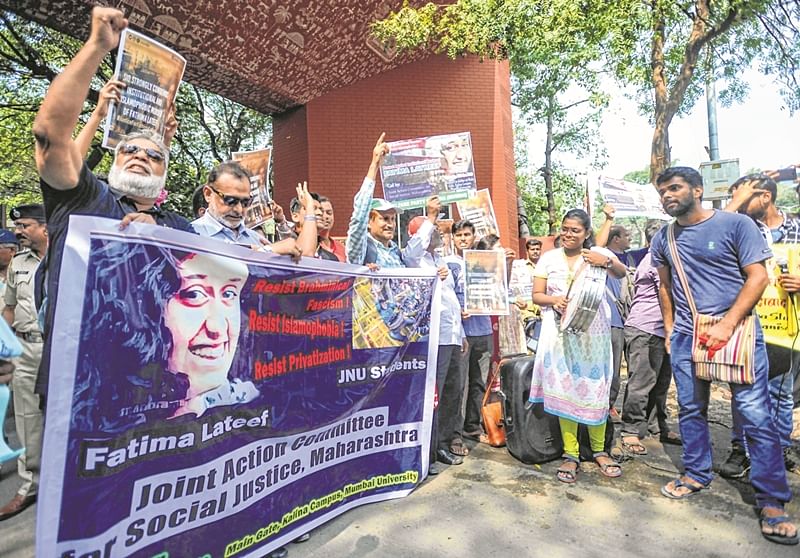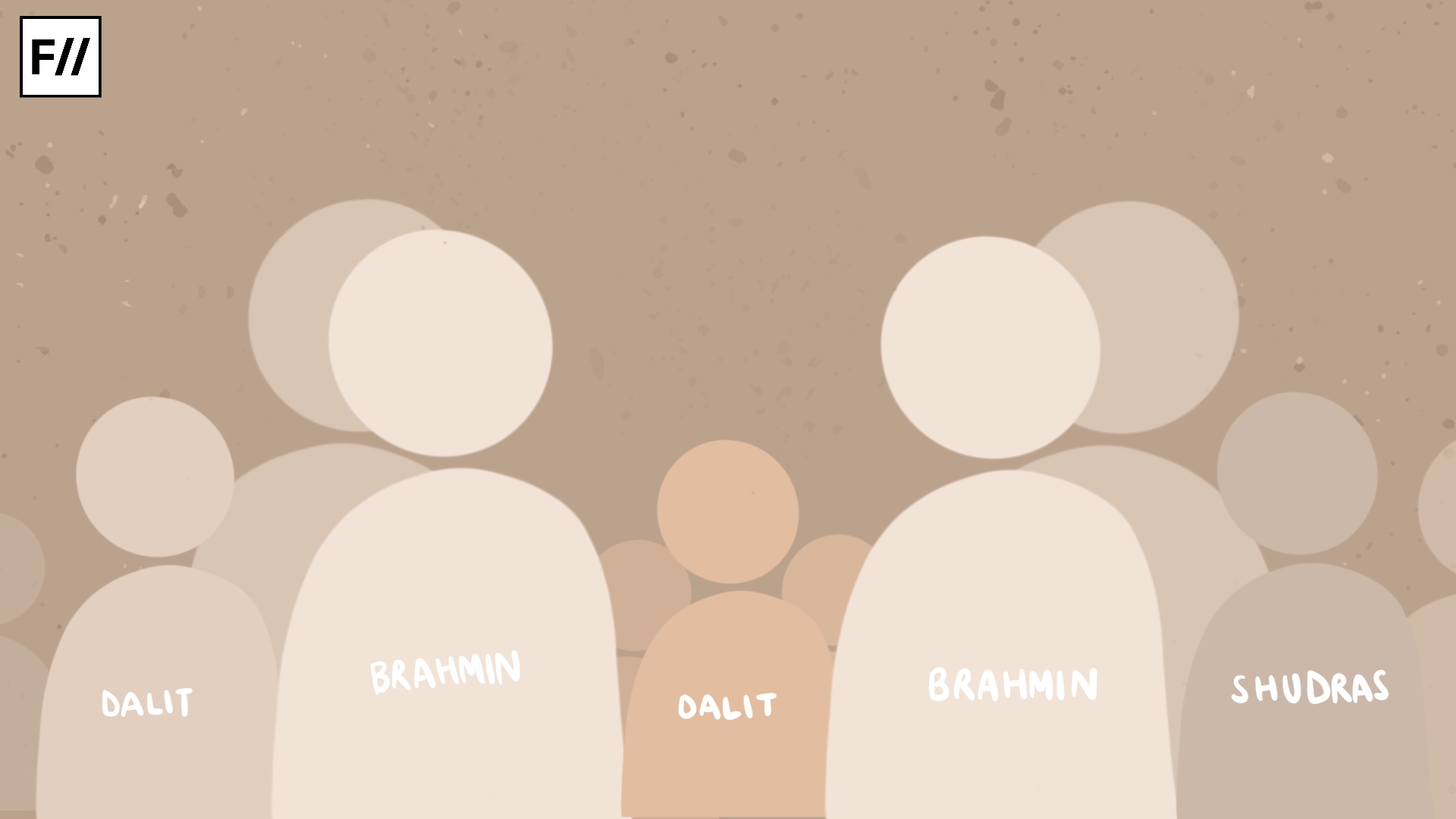Educational institutions are considered as sacred spaces of learning. Education makes us learn and unlearn a lot of things. However, in many cases the unlearning part came through a sense of self-evaluation and when we look back, unfortunately, we see us to have internalized various aspects which we find problematic in our future course of life. We all want our campus setups to be free from biases or discriminations, yet we miserably fail in doing so. There is internalized casteism, sexism, islamophobia, classism and what not, that keeps perpetuating.
Sadly, these institutions do not acknowledge it. Even if someone from marginalized communities does talk about it, no one wants to hear it. The dominant position will see educational institutions as a place to raise voice against “injustice”, but will a marginalized person really feel comfortable to speak up against what they find problematic? I really doubt so.
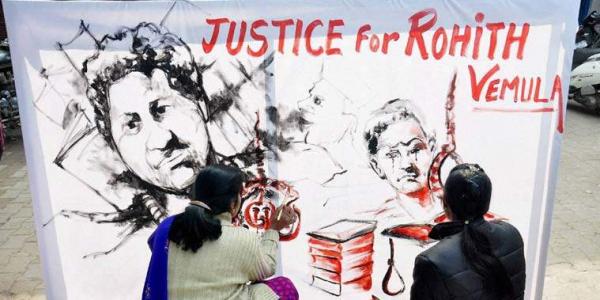
We often had conversations in schools about certain social aspects, without looking into sensitization of the kind of language that was being used. We used homophobic slurs and sexist language all the time. Structural hegemony of dominant groups would manifest itself either in terms of “brahmanical” notion of purity and pollution in forced vegetarianism, or in the case of teachers asking students to study harder because they are not from “reservation category”, implying that students from reserved categories make it easy!
Higher Education And Marginalisation
In higher educational institutions, there are numerous cases of discrimination on grounds of identities targeted towards the marginalised. The reason various support ‘cells’ or groups are formed in colleges and universities is because discrimination and marginalization actually happen. When students are bullied to the extent that they commit suicide, when entire syllabus of subjects is questioned and teachers are threatened, when insensitive language and assaults become common, when a student is very conveniently considered “anti-national”, the question that remains is “Whose campus is it anyway”?
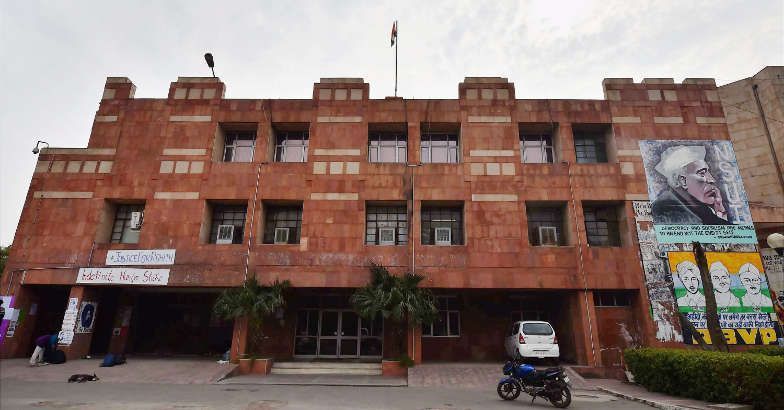
The problem does not lie with existence of majoritarian ideology or voice within the campus. The problem lies within the hegemony of this voice which dominates and suppresses the alternative and often marginalized voices. The voices of dissent whether against sexual harassment in NIFT or denying of admission to a student in TISS for speaking cuts in SC/ST scholarships, are suppressed or left deliberately unheard.
Systematic, institutionalised, public, personal and political. Intolerance is one thing but selective tolerance is much more than just a choice. Your existence gets politicised based on your identity. And when you speak, they want minds to stop thinking, mouths to stop speaking and all dancing to the tunes of majoritarianism.
“You think that marginalisation only exists as a larger picture, until you realise how carefully curated it is. Systematic, institutionalised, public, personal and political. Intolerance is one thing but selective tolerance is much more than just a choice. Your existence gets politicised based on your identity. And when you speak, they want minds to stop thinking, mouths to stop speaking and all dancing to the tunes of majoritarianism“, says Aaliyia Malik, a student of journalism from Lady Shri Ram College,Delhi University.
Also read: To Choose Or Not To Choose Science: Gendering Of Higher Education
The backlash on JNU’s struggle to fight for public education is inherently based on seclusion of the underprivileged, who find these public universities as the only resort to get education. A lot of students from non-english academic backgrounds throw light about disadvantages faced by them because of their entitlement to speak in English.
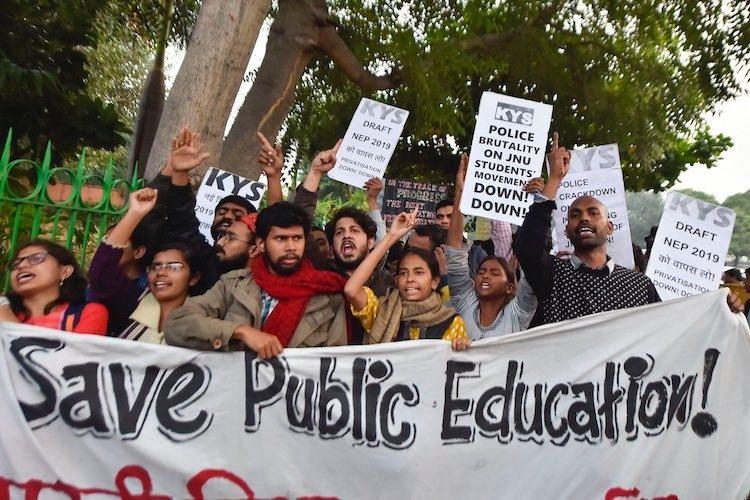
“Even in these “feminist” academic institutions, you see discrimination in a lot of ways from seclusion and groupism to judgements on basis of ways of clothing to speaking in English.” Mukta, a student of Bel.Ed from Delhi University recalls what first years from small towns encounter while socialising.
Mental Health And Institutions
Although the harsh realities faced by students are an ‘open secret’ in a campus setup, there has been absolutely no collective action against the discrimination faced by marginalized communities in “elite” educational institutions. The chilling accounts of loss of lives of Fathima Lateef, Payal Tadvi, Rohith Vemula and thousands of students should ideally shake the nation-state. Father of Fathima, the ITT Madras student, who recently died due to suicide, recalls her daughter saying that there is problem in her ‘name’, which makes us think about the islamophobic atmosphere and the direct and indirect exclusion felt by students.
The administration turned blind eye to the real problem by brushing aside the reports of discrimination calling the reasons as “academic stress”, ragging or worse the “inability to cope up with atmosphere”. The very islamophobic reasons of ragging or harassment, although aren’t really unknown. These incidents suddenly evoke discussion on mental health but not on the reasons behind, and thus, there is a complete change of narratives.
The administration turned blind eye to the real problem by brushing aside the reports of discrimination calling the reasons as “academic stress”, ragging or worse the “inability to cope up with atmosphere”. The very islamophobic or casteist reasons of ragging or harassment, although aren’t really unknown. These incidents suddenly evoke discussion on mental health but not on the reasons behind, and thus, there is a complete change of narratives.

As I encounter these incidents in one of the most prestigious institution of this country, something deeper hits to ponder that whether we as “Muslim women” belong to these urban “progressive” elitist discriminatory spaces at all? Our “Muslim identity”, not only makes us vulnerable for a lot of things but there are thousands of eyes and slurs that are thrown to us. The notion of Islam being “patriarchal” and Muslims being regressive, puts women like us on the spot who are privileged enough to come out from spaces where the literacy rate for Muslim women is quite low, and it also has school dropout rates higher than any community. However, the structures or mechanisms that work behind such marginalisations are never scrutinised.
Whose Campus Is It Anyway?
The place where education and knowledge is supposed to empower us and liberate us from the chains of prejudices and discrimination has rooted itself in various institutionalized differences. There have been provisions to have various committees or cells to protect the interest of marginalised communities in colleges.

Are these cells functional? Have these cells been given agency to talk about? The protection of rights and voices is not only in the hands of not of administration but the students who form the collective student body. How often we have tried to have a conversation with a student who seems to be a bit uncomfortable in the environment of colleges? How often we have tried to consider voices of people in campus who are at the receiving end of oppression?
Also read: Dalit Women Learn Differently: Experiences In Educational Institutions
All such questions stand moot, in the present context.
Featured Image Source: Free Press Journal
